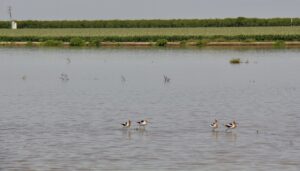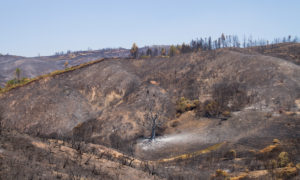Forty-nine-year-old Roger Kelly is a Stockton lifer, born and raised in the Sacramento-San Joaquin Delta. River culture is in his blood, and whether alone or taking the helm as a boat club commodore, he is a fixture on the water.
But for Kelly, a growing menace this year has pushed him off the water and left his boat in the weeds. The scourge is an invasive plant known commonly as the water hyacinth. Having no natural controls, it has proliferated, choking boat navigation and marinas in much of the Delta’s 1,000 miles of waterways.
The plant is hardly new, and usually cold winter temperatures and heavy rain are the answer to seasonally killing it off in the winter months. But this year an unwieldy combination of drought conditions and nutrient-loaded water has created a perfect storm for its growth. State and local agencies have dumped millions into control efforts, but the species has grown so dense in areas that it has become a threat not only to boat safety but also to the ecological balance of the Delta.
In November, the California Division of Boating and Waterways moved to address the problem with a program of spraying herbicide and in December through mechanical harvesting, but has had limited results. The state senator who represents the Stockton area recently met with a number of local stakeholder organizations, state agencies, the U.S. Department of Agriculture-Agricultural Research Service (USDA-ARS) and NASA (which creates aerial survey maps of the water hyacinth) to discuss solutions to the weed’s infestation.
“Every year I can remember seeing a little bit of hyacinth, but it seems like in the last four or five years it’s gotten much worse,” said Kelly, whose home sits on the bank of the Calaveras River. “This year by far is the worst that anybody has seen it.”
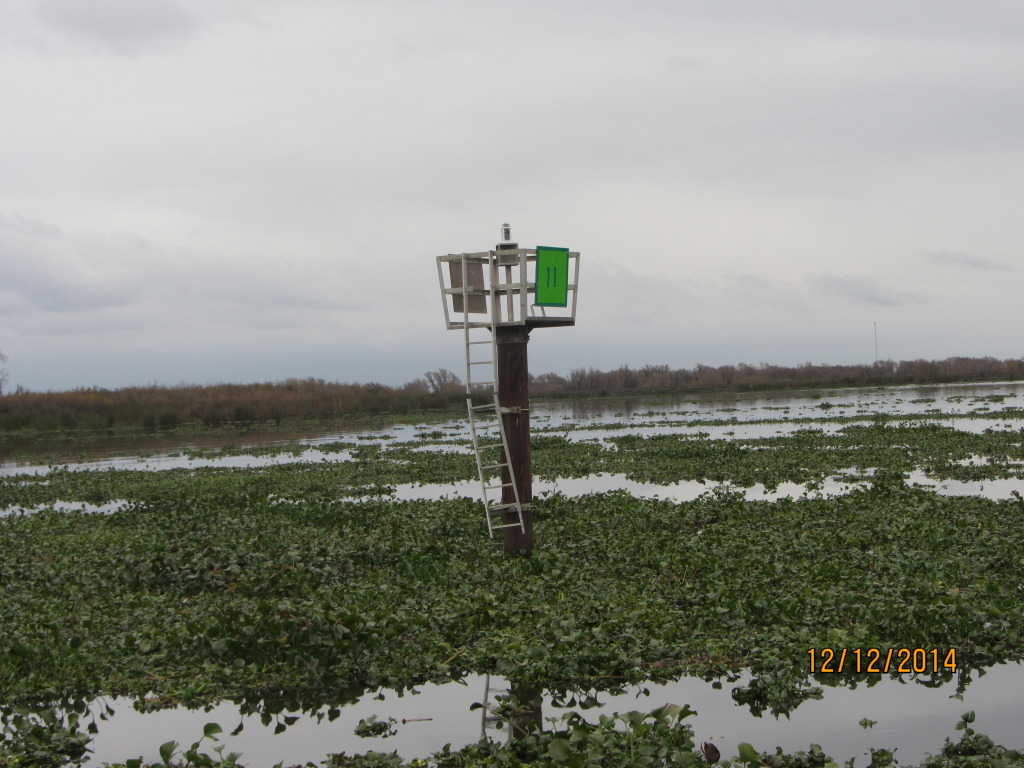
Water hyacinth (Eichhornia crassipes) floats on top of fresh water and is characterized by thick, shiny green leaves and lavender flowers. Native to the Amazon basin, it was originally introduced from South America to the U.S. at the 1884 World’s Fair in New Orleans. From there it invaded the Mississippi River, flourished in Floridian waters and eventually made its way into the warm flows of California’s Sacramento-San Joaquin Delta about a century ago.
The sub-tropical species is extremely prolific and can double in size in fewer than two weeks of hot weather, creating a dense mat of floating vegetation of up to six feet thick. The plant reproduces both sexually and asexually, cloning itself and also dropping seeds into the soil that can linger for years.
Ecologically, blankets of hyacinth can limit the amount of sunlight that reaches other plants below the surface, interrupting photosynthesis and killing plants and microorganisms important to wildlife. Dead fish have also been seen on the hyacinth, victims of suffocation after jumping on top of the green thickets and being unable to return to the water.
The ecological imbalance caused by the plant has also led to new pest control problems. A new federally funded Area-Wide Pest Management Project grant headed by the USDA-ARS, which includes cooperation from the San Joaquin and Contra Costa Mosquito Vector Control Districts, is examining how the hyacinth acts as a breeding ground for mosquitos.
“They’ve seen an association between dense populations of water hyacinth and mosquitos nearby,” said Patrick Moran, research entomologist with the USDA’s Western Regional Research Center in Albany, CA. “One of the things we are studying is whether or not the water hyacinth makes it difficult for predators to get to the mosquito larvae.”
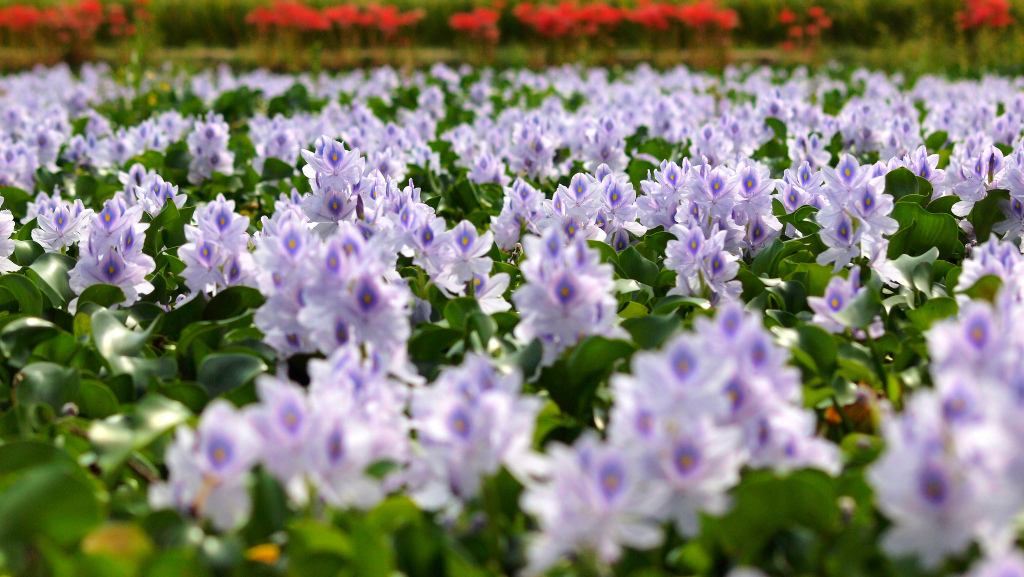
This year was particularly bad for water hyacinth control because of the severe drought and more nutrient-rich water. The high temperatures and low water flows accelerated the plant’s growth, and more stagnant water has led to a higher concentration of farming fertilizers and treated municipal sewage that isn’t being flushed out of the system, according to the Delta Stewardship Council’s Rainer Hoenicke, deputy executive director of the organization’s science program. The Sacramento wastewater treatment plant, which serves 1.4 million customers, has become a contributing factor to the water hyacinths growth rates.
“It’s the cascading effects of a drought that results in higher temperatures and less nutrient dilution and they are going hog wild,” Hoenicke said.
Over the decades, authorities have conjured up a host of far-fetched and ineffective control measures ranging from dousing the plant with oil to introducing African hippopotami to eat it. The congressional hippo bill failed to pass in the early 1900s and the animals never made their way to America, but the idea of importing a non-native species to combat another one did.
Forty years ago, the U.S. Army Corps of Engineers used helicopters to drop two types of water hyacinth weevils — small crop pests known as Neochetina eichhorniae and Neochetina bruchi — to remote areas of Louisiana to destroy the plant by eating it, and the N. bruchi weevil was later imported to Northern California for the same purpose. The program ceased in the 1980s, and while the weevil still exists in the Delta today, so do larger concentrations of water hyacinth.
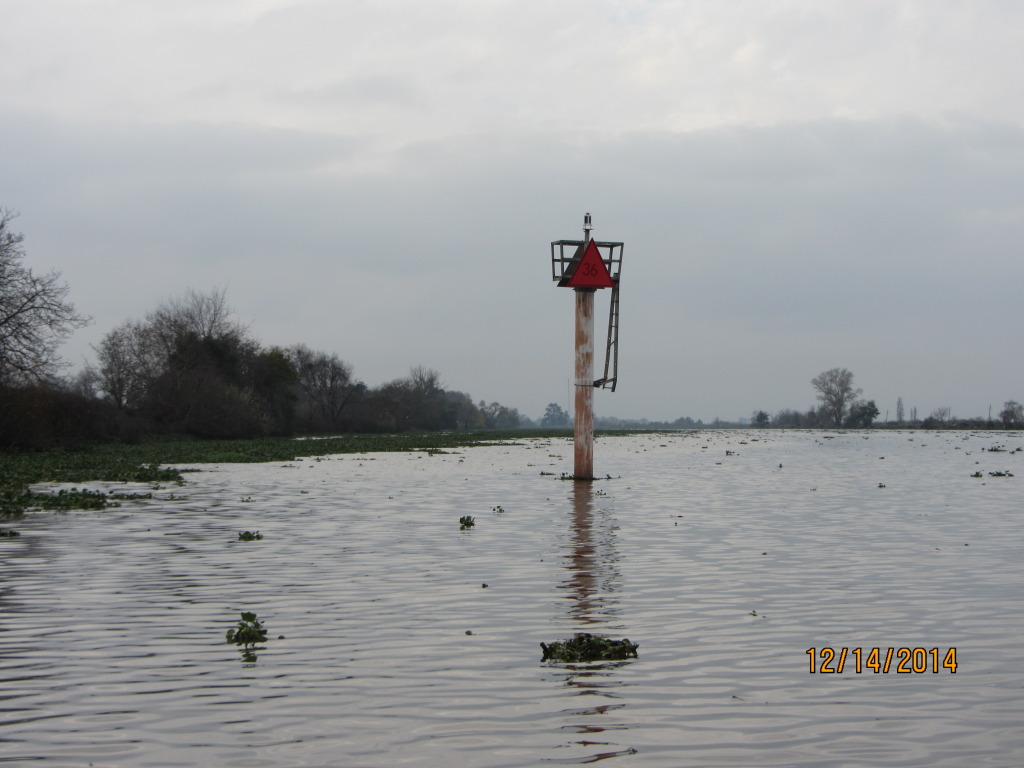
Now a similar project is taking shape at the USDA-ARS’ center in Albany. With respect to the weevil, researchers are looking into the possibility of importing an Argentinian version, according to Moran, an entomology specialist, from regions where the insect thrives in a climate similar to that of the Sacramento-San Joaquin Delta, as opposed to the more tropical version imported in the past.
“The hypothesis that we are pursuing is that there could be the same species but a different collection of the weevil that might be better adapted to the conditions here in the Delta,” Moran said. “We are also planning to release a new insect, the water hyacinth planthopper Megamelus scutellaris, which was previously released at a couple of sites by the [California Department of Food and Agriculture].”
The Division of Boating and Waterways is also part of the multi-agency project and is spearheading the control effort, which has included herbicidal spraying of more than 2,400 acres of water hyacinth in 2014 and mechanical removal of the weed near Stockton. But herbicides are limited in their effectiveness because rain can dilute their potency and year-round spraying could harm migratory fish. During the spray season between March and November there are also restrictions on chemicals that can be used in certain areas.
The control program is an ongoing battle with no end in sight. Seeds from water hyacinth have established themselves in the sediment and will continue to germinate even if all surface plants are removed from the water. These seeds have been reported to survive up to two decades in dried mud, according to Vicky Waters, deputy public information officer at California State Parks, which oversees the Division of Boating and Waterways.
“There is no known eradication method for the water hyacinth in the world,” she said.
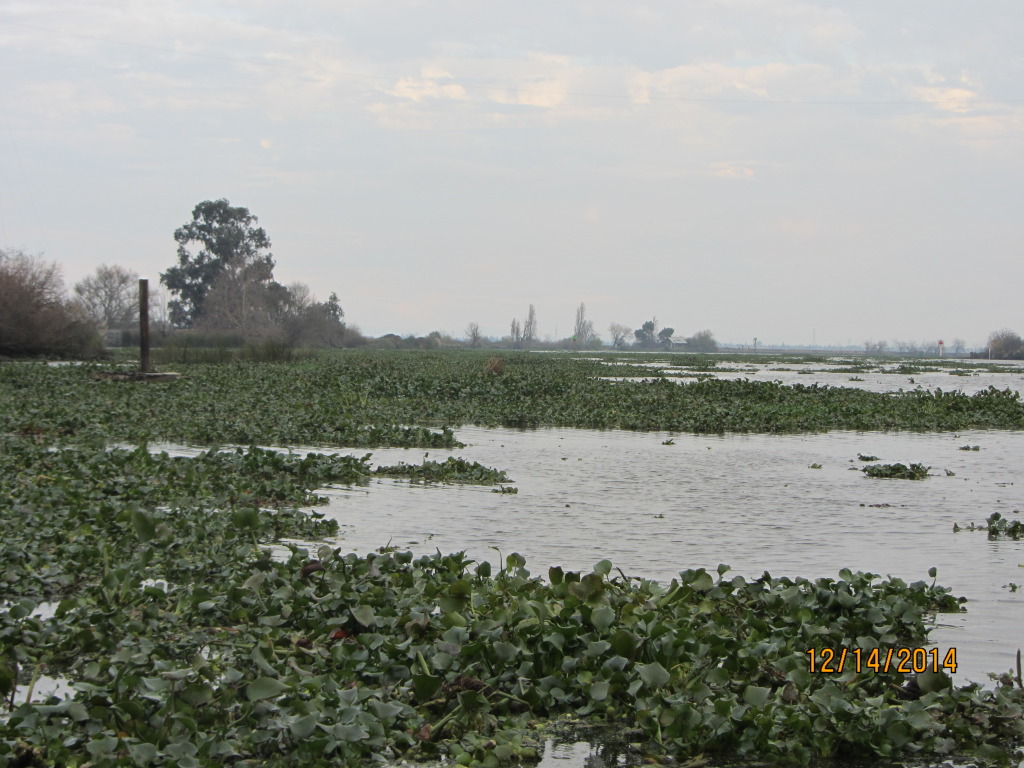
Meanwhile, Mother Nature is most effective at destroying the plant. Cold temperatures mixed with heavy winter rains usually push water hyacinth into the saltwater portions of the Delta, where it dies, but changes in climate this year have not made this possible. This has resulted in economic losses and political turmoil over public safety.
Recreational boating generates about half a billion dollars worth of business in Northern California, said Bill Wells, California Delta Chambers and Visitor’s Bureau executive director, and boating clubs and guide fishing have been particularly hit hard. In late fall, water hyacinth had inundated downtown Stockton and strangled the port to such an extent that it also forced the city to cancel the 35th annual Delta Reflections Lighted Boat Parade, previously scheduled for December 6.
Wells said the situation has created a “national security” risk, especially for fog or nighttime navigation. For boats using radar, dense areas of the weed in the rivers show up as solid landmasses.
“There are a million facets to the problem and it’s very serious,” Wells said.
In times of great fiscal pressure on the state government, budgeting for water hyacinth control has also been an issue. The Division of Boating and Waterways Aquatic Weed Control Program spent more than $7 million last fiscal year and allocated more than $9 million for 2014-2015.
On December 15, State Senator Cathleen Galgiani hosted a town hall meeting with a panel of experts from the Division of Boating and Waterways, California Delta Chambers and Visitor’s Bureau, the Port of Stockton, USDA-ARS and NASA-Ames Research Center to discuss both the water hyacinth and another invasive weed, Egeria densa, which, like a freshwater seaweed, has spread beneath the surface of the water. The tag team combination of these two South American infestations — the water hyacinth on top and Egeria densa below — has created what has been called a “green menace” in the Delta.
On a December afternoon, as Roger Kelly sat inside his home on the bank of the Calaveras River, he could hear the machines removing the plant. He went down to the river to film a vessel slicing and dicing up the green weeds.
“It looks like a lawnmower going through the water,” he said.
To the uneducated observer, it would seem progress was being made, but Kelly sees it differently. “This is ten-fold worse than I’ve ever seen it before.”
Nonetheless, he still sees hope for the waterways he calls home. One bright spot is the heavy rain that recently hit the state. Being a mobile surface plant, new water flows could help push this year’s crop out of the river system. Another hope is for a cold winter this year to kill off most of the tropical menace. But even if this occurs, Kelly knows the plant will return in spring and begin to spread again, just like it does every year. He said the only thing people can do is to report the water hyacinth to the authorities when they see it early in the season. This awareness, he insists, could make a dent in its vast coverage before it grows out of control.
“I think there are ways around this,” he said.


